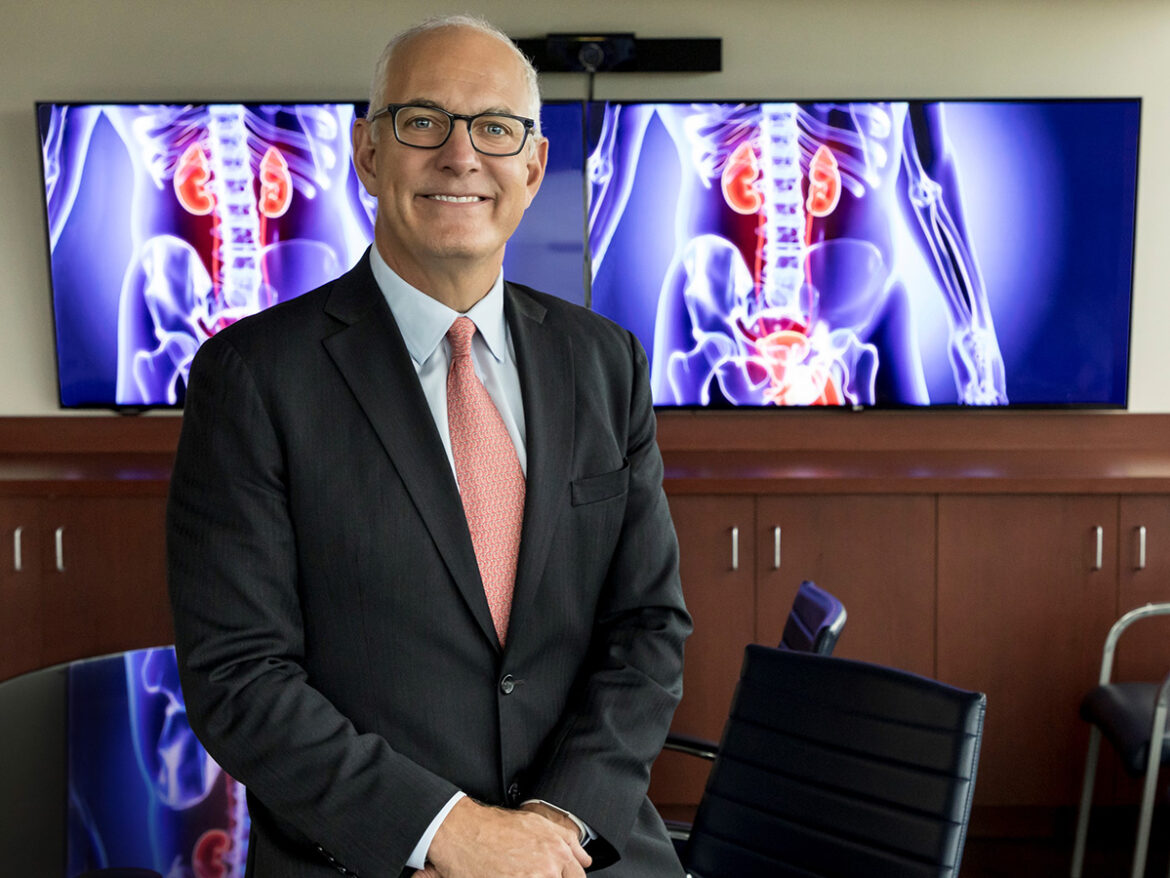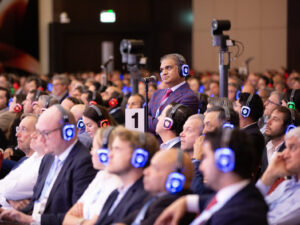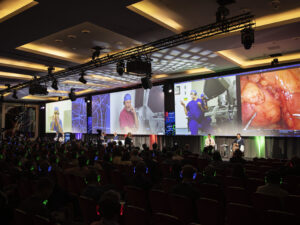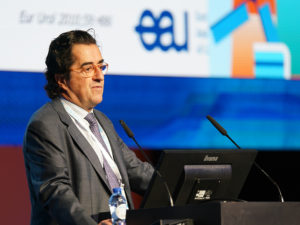ERUS25 can boast a record number of different robotic systems as part of its live surgery scientific programme, a clear demonstration of the great diversity of technology now available to urologists. One of these new systems is the Da Vinci 5, which will be demonstrated by Prof. Michael Stifelman (USA), operating from New Jersey and broadcast live to the audience in London on the first day of the meeting.
ERUS25 is the 22nd Meeting of the EAU Robotic Urology Section, held in London on 10-12 September 2025. In addition to the Da Vinci 5, the meeting’s scientific programme features Intuitive’s da Vinci X, Xi, and SP 5 systems, the Medtronic Hugo RAS, the MicroPort Medbot Toumai, Edge Medical and SSi Mantra systems.
- Registration for ERUS25 is currently open! The discounted regular fee is available until 29 August, after which the late fee will apply.
Prof. Stifelman’s department has been using Intuitive’s DV5 since April 2024, and with its recent approval for use in Europe, delegates will be interested to see it in action and ask for his experiences. By September, his department at Hackensack University Medical Center will have already performed 1000 cases on the new system. In this interview, Prof. Stifelman gives a sneak preview of what he will be demonstrating.
What can you tell us about the case you will be performing?
“I will be performing a reconstructive case and on behalf of the ERUS Scientific Committee I want to demonstrate three features that are unique to the DV5.”
“First of all, the surgeon has much more direct and instant control of settings like insufflation, smoke evacuation and especially force feedback. Whereas in the past we would calibrate the system once at the beginning of the procedure, we can now constantly adjust on the fly. With adjustable force feedback, it means we’re starting to think about surgery a little differently and it makes us gentler surgeons.”
“Then, there is the integration with 3D-modelling, which allows us to project a model of the patient’s anatomy onto the surgeon’s field of vision.”
“Finally, and most significantly, the system already makes wide use of AI in various ways. We’re starting to use combination of AI and quantitative analytics during surgery. Intuitive’s Case Insights Engine is something that we’ve never had before on any robotic platform. I mentioned 3D-modelling but another example of AI being used intraoperatively is automatic blurring when the camera is removed from the patient and cleaned, this is for reasons of privacy.”
“The biggest way the system uses AI is how the DV5 system allows you to take video from a case and automatically break it down into defined segments. How does that help us? It becomes an incredible tool for teaching. I can show a resident or fellow how I do an urethral vessel anastomosis, and I can pull up the way they do theirs and easily compare.”
“This kind of editing and analysis used to be very labour-intensive, nobody really did it. Now we just pull up the app, go to the case, click a button, it goes right to that part of the operation. So it’s a much easier user interface. The system can tell me how long specific parts of a procedure took me, compare that to my average. It tells me how much pressure I put on the tissue, how long I used my ProGrasp and Maryland Bipolar, it tells me how often I clutched the endoscope.”
“Having all this data at your fingertips gives it tremendous educational potential. At the moment this is processed once the operation is done, but at some point this is going to be done in real time.”
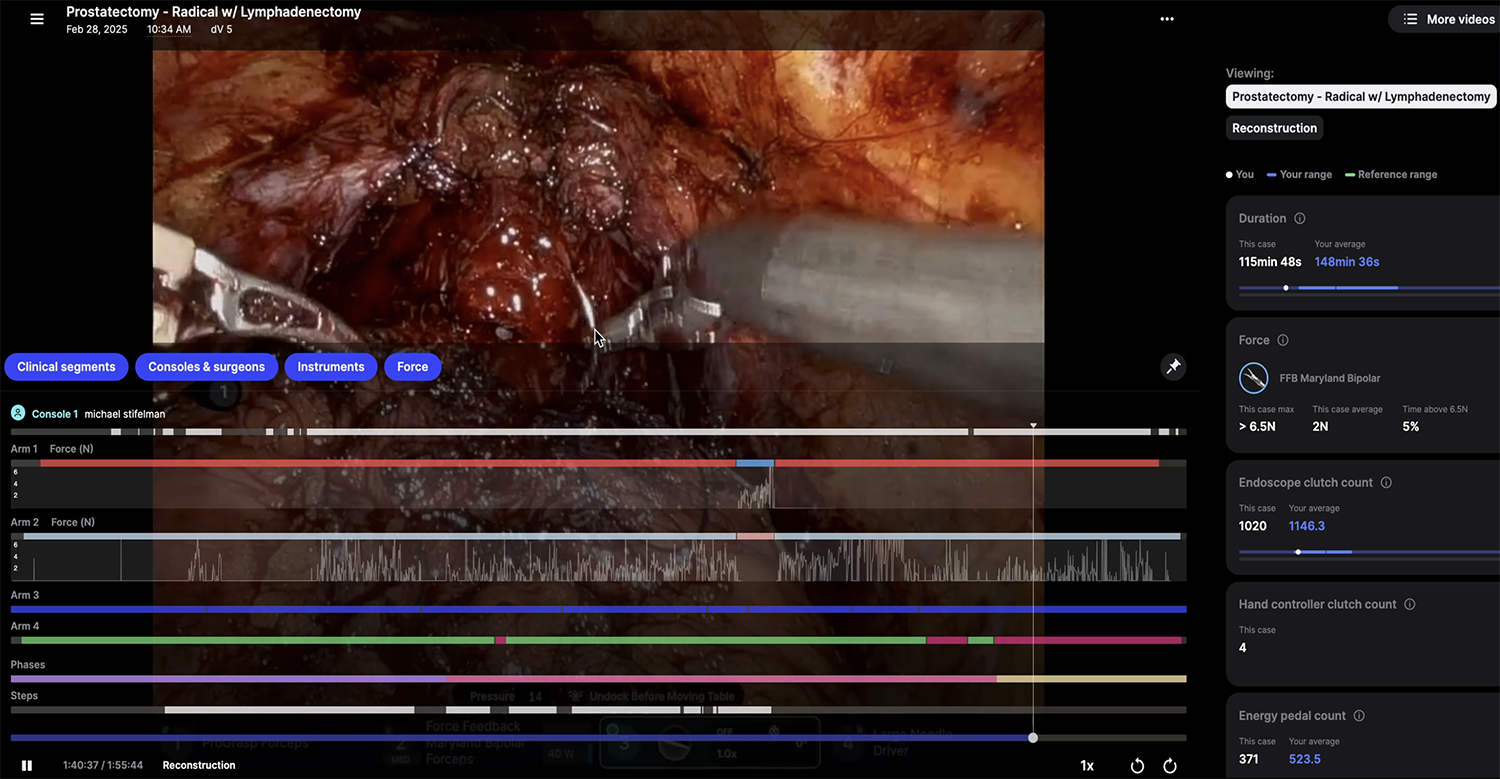
The DV5’s new ‘Case Insights Engine’ uses machine learning to analyse recorded cases and combines it with data from the instruments.
How has the transition been to DV5 from its direct predecessor, the Xi?
“There has hardly been any learning curve, it’s not much of an adjustment from earlier systems. Just looking at a DV5 system, the only difference you’ll notice is the console itself. It’s more ergonomic for the surgeon, more comfortable, and puts less strain on your cervical spine. The part that operates the patient looks the same and has similar functionality. The more than 150 changes over Xi are integrated into the system, including the metrics and machine learning.”
“These improvements all add up to more autonomy and capability within the console, allowing for a minimum of case disruption and more focus on the patient and procedure at hand.”
With the approval in Europe, your colleagues on this side of the Atlantic will probably be keen to learn from your experiences.
“One of the things we’ve learned in the US: it’s really important to be collaborative with our European colleagues. For instance with the Da Vinci SP, we had access some three years before it was approved in Europe. When Europeans got access, many of us from the US flew specifically to help transition of surgeons from multi-port to single-port.”
“Now, some of the most incredible work done on the SP is by European surgeons. That’s the collaborative approach, working together to help our patients and innovate. I’m sure we’ll see a similar dynamic with the DV5. We share what we’ve learned, and others will take it further still.”
Despite your physical absence in London, are you looking forward to ERUS25?
“Absolutely! It’s only due to a conflicting appointment that I can’t make it this year. Why am I so committed to the ERUS meeting, why is it so important? I’d say it’s a unique meeting. It’s surgeons and scientists from all over the world, like-minded, interested in innovation, who prioritise patient care and quality, meeting together and sharing ideas.”
“One of the ways through which we share ideas is live surgery, of which I am a huge believer. I think it’s one of the most useful ways to teach surgery, better than any pre-recorded case. It provides an opportunity for the audience to interact directly with the surgeon, to understand very clearly why he or she is performing the surgery in that specific way. Things come up that we didn’t expect and we can see how that surgeon managed that difficult situation. You can even ask a surgeon to demonstrate something a second time.”
“In real-time, live setting, it creates engagement with the audience. The pressure, the seriousness, it demands and holds everyone’s attention.”

